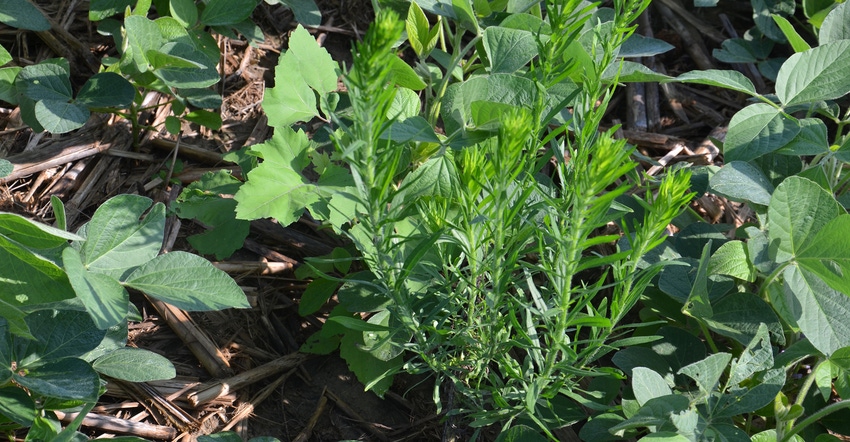
Perhaps you’ve read Tom Clancy novels featuring Jack Ryan. Beginning with “Red October,” published in the early 1980s, Clancy wrote bestselling novels with complex plots, sometimes including disastrous, unthinkable hostile acts — everything from terrorists blowing up Super Bowl Sunday to a deranged pilot flying an airliner into the U.S. Capitol. The chilling truth is many plots were later mirrored in real life.
Metabolic-based weed resistance is as complex as twists in a Clancy novel. Pat Tranel, a crops researcher at the University of Illinois, recently told certified crop advisers at the Indiana CCA Conference three important things. First, metabolic-based weed resistance is on the increase. Second, the study of metabolic weed resistance is in its infancy. Third, it could make chemical weed control very difficult in the future.
Closer look
“Metabolic-based herbicide weed resistance is important enough that I started discussing it with farmers a year ago and will emphasize it this year,” says Bill Johnson, Purdue University Extension weed control specialist. “Everyone needs to understand what it could mean for future weed control programs.”
Until the past few years, most weed resistance was thought to occur because of target-site resistance. Mutations happened inside a weed population that allowed individual plants to be unaffected by an active ingredient at the site of action inside a plant. This type of resistance is easy to diagnose and easy to predict consequences with computer models, Tranel says.
Metabolic-based resistance, also called nontarget-site resistance, occurs once weeds develop that can convert an active ingredient into metabolites that don’t kill the plant. Often, enzymes involved in breaking down herbicides are natural players in the plant with necessary functions.
This process evolves over time. What makes this complicated process even more complex is that weeds can develop cross-resistance. They can sometimes begin breaking down molecules of a completely different herbicide, causing it to be ineffective, even when the weed wasn’t known to be resistant to that herbicide.
Troubling implications
Metabolic-based resistance to atrazine in waterhemp was confirmed in 2005. In the past decade, metabolic-based resistance to several chemistries in various weeds was confirmed.
“The problem with metabolic-based resistance is that we can’t predict where or when resistance to other chemistries in various weeds may show up,” Johnson says. “Unlike target-site resistance, we won’t be able to manage this type of resistance just by rotating chemistries and modes of action for long periods of time.”
So, what does all this have to do with 35-year-old spy novels? Carry the implications of metabolic-based resistance into the future, and the possibilities are chilling.
Tranel says the worst-case scenario is that as weeds such as waterhemp continue stacking diverse herbicide-metabolism genes into their genetics, it could be the beginning of the end of the chemical era of weed control. It’s conceivable that certain weeds in the future could be resistant to a new chemistry as soon as that chemistry is released.
Clancy typically offers hope in his novels. Both Tranel and Johnson say the implication here is to begin increasing use of nonchemical weed control strategies now.
About the Author(s)
You May Also Like




